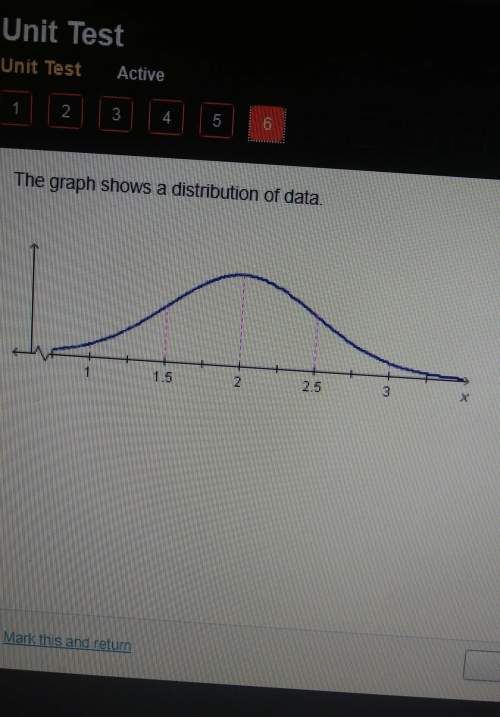
Mathematics, 22.04.2021 15:40 vaeh41
To compare the dry braking distances from 30 to 0 miles per hour for two makes of automobiles, a safety engineer conducts braking tests for 35 models of Make A and 35 models of Make B. The mean braking distance for Make A is 40 feet. Assume the population standard deviation is 4.7 feet. The mean braking distance for Make B is 41 feet. Assume the population standard deviation is 4.3 feet. At α=0.10, can the engineer support the claim that the mean braking distances are different for the two makes of automobiles? Assume the samples are random and independent, and the populations are normally distributed. Complete parts (a) through (e).

Answers: 3


Another question on Mathematics

Mathematics, 21.06.2019 16:30
If g(x) is an odd function, which function must be an even function?
Answers: 3

Mathematics, 21.06.2019 17:30
Find the pattern and use it to list the nth term in the sequence. 6, 12, 20, 30, 42, 56, the nth term of the sequence is
Answers: 3

Mathematics, 21.06.2019 18:00
The larger of two number is 4 less than twice the smaller number. the sum is 41. find the numbers
Answers: 2

Mathematics, 21.06.2019 19:20
The suare root of 9x plus 7 plus the square rot of 2x equall to 7
Answers: 1
You know the right answer?
To compare the dry braking distances from 30 to 0 miles per hour for two makes of automobiles, a sa...
Questions

Mathematics, 15.01.2021 22:40

Arts, 15.01.2021 22:40


Chemistry, 15.01.2021 22:40



Mathematics, 15.01.2021 22:40

English, 15.01.2021 22:40

Geography, 15.01.2021 22:40

Mathematics, 15.01.2021 22:40




Biology, 15.01.2021 22:40

Mathematics, 15.01.2021 22:40



Mathematics, 15.01.2021 22:40





